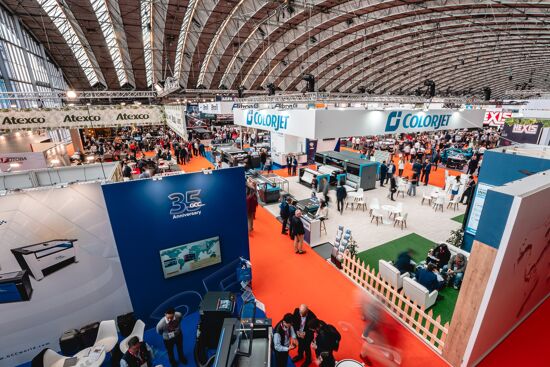Understanding colour management
Colour management is often seen as a difficult subject, one that many wide format printers struggle to master.
In truth, colour science is enormously complicated with many variables to take into account, but putting colour management into practice is relatively straightforward.
Colour management is all about measuring the equipment in order to reproduce the colours in any given file first time, saving both time and money on mistakes. Moreoever, the colours can be easily repeated, meaning that if part of a graphic is damaged then only that part needs to be reprinted and the colours will match up. The colours should still match even if you have to change to a different printer.
Most of the variables can be dealt with by profiling the equipment. The basic concept has been codified by the International Color Consortium and there are different classes of ICC profiles for the various devices. Thus monitors require input profiles that describe the characteristic of any given screen. But printers use output profiles, which describe not only the printer but also the substrate and the ink used.
Fortunately, most wide format printers work from a single inkset, but you will still need a different profile not only for each substrate, but also for each different quality mode that you're likely to use that substrate at. The profile will determine how much ink is laid down and how much heating or curing is applied. As a rough guide, there's a fair bit of leeway with many UV printers because UV inks cure instantly, but much less with some solvent devices and the profile will have to be bang on for heat sensitive materials on a latex machine.
Most printers will come with so-called 'canned profiles', as will most substrates. But you get better results if you make your own profiles, which will take into account the specific environmental conditions around your printer such as humidity and temperature. This should also cut down on ink consumption as just about all colour management software includes some form of ink optimisation that can cut ink usage down by up to 30 percent.
Colour spaces
One obvious problem is that most files are viewed on a monitor in RGB and then printed in CMYK. There isn't space here to argue the merits of individual colour spaces, other than to say that most designers should work in Adobe RGB (98), which has quite a wide colour gamut.
There are several CMYK colour spaces but Fogra39 is probably the most widely used in Europe and is a good starting point wherever you're located. The main advantage of Fogra39 is that it is used for offset litho printing and so it will be easier to match jobs to other print processes, such as ensuring that posters tie in with packaging. But most wide format devices can produce a wider colour gamut than offset presses and you may not want to limit this.
The standard ICC concept involves using a colour matching module or CMM to convert RGB colours firstly to an independent LAB colour space and from there to CMYK. Both Windows and Mac operating systems have their own built-in CMM, as does the Adobe Creative Suite and most colour management software.
But there is an alternative - DeviceLink profiles - that is becoming more popular. DeviceLink profiles are similar to ICC profiles but cut out the middle transformation, going direct from RGB to CMYK devices. They're less flexible than the more common ICC profiles but there's a good argument for their being more accurate.
RIPs and colour servers
Most wide format printers come with a dedicated RIP so that anyone with multiple printers will likely have several different RIPs. In theory, colour management should ensure that all these printers are capable of producing the same colour output but most experts advise that using a single RIP will produce more consistent results.
However, not all RIPs can support multiple printers and you’ll almost certainly have to buy additional licenses or drivers. You will probably need to factor in extra workstations to cope with the additional processing work. Most RIPs can handle ICC profiles though the ability to create and to edit those profiles may be an optional extra.
There’s also a growing number of wide format workflows that can separate the file preparation away from actually running the printer. Some of these, such as Onyx Thrive, have evolved from existing RIPs. But others, such as Agfa Asanti and GMG ProductionSuite have been designed as modular workflows. In either case, the ability to centralize the colour management is a major selling point and all of these have facilities to create and manage ICC profiles.
As with many RIPs, SAi’s FlexiSign Pro can be used to make and to edit ICC colour profiles.
The next step up is a colour server, which can automate the colour management of incoming files for multiple devices and will work across mixed print environments including offset and flexo as well as wide format. GMG’s ColorServer is one of the most widely used systems. It includes a profile editor and will also optimize PDFs for print production.
Conclusion
Another important consideration is that colour is very much in the eye of the beholder. Ideally, you should judge colours under a known light source, such as a viewing booth, though this isn't always practical for large format work.
But at the very least you should set aside an area with consistent lighting and neutral colours on the walls to judge prints and proofs. It's also worth noting that heat and ambient conditions can affect the colour output of a wide format printer. Some high street bureaux leave the printer in the window to advertise the service and then wonder why the colours print differently in the afternoon!
As we’ve noted, the key aspect of managing colours in a wide format context lies in the quality of the profiles used. In part two of this story we'll look at the various devices used to make these profiles.
Topics
Interested in joining our community?
Enquire today about joining your local FESPA Association or FESPA Direct
Recent news

GenAI + POD: The Smartest Way to Add Personalised Products to Your Retail Offering in 2025
In 2025, GenAI and POD are transforming retail. Masterpiece AI empowers businesses to offer unique, AI-generated personalised products, from apparel to home decor. Customers use text prompts to create custom designs, streamlining production and boosting sales. This revolutionises customer experience and product offerings.
.png?width=550)
What qualities should visionaries in print have? With Folker Stachetzki from Brother
We speak to Folker Stachetzki, Head of Marketing at Brother about visionaries in print.

Bolstering personalisation by combining print and digital technology
Using printed material in combination with digital technologies offers more opportunities to those offering personalisation to customers. Rob Fletcher shares some recent examples of the print and digital working together to enhance the impact of personalised pieces.

European Sign Expo to highlight developments shaping the future of signage and visual communications
European Sign Expo 2025 (6 – 9 May, Messe Berlin, Germany) is weeks away and a host of leading exhibitors are all set to welcome Visionaries from across the signage and visual communications industries to their stands.